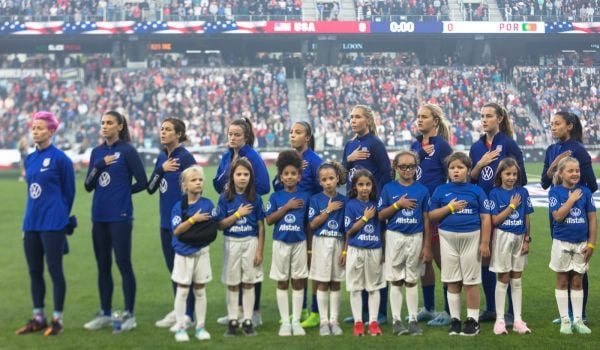Teenage girls don’t get much respect. We mock their favorite music and their books; when have you heard anyone say anything nice about One Direction or Twilight? We don’t take their opinions seriously. And, say many architects, we push them out of public spaces by intentionally or accidentally designing spaces that don’t welcome them.
At the London Festival of Architecture, a monthlong event that wrapped last week, the Swedish architecture firm White Arkitekter staged an event to help festivalgoers “experience the city from a girl’s perspective” through theater.
Architectural Digest describes the performance: Two teenage actresses “wander through spaces that clearly weren’t made for them.” Originally staged in Stockholm three years ago, the White Arkitekter brought a version to London partly because its second office is in London, but also because the project “speaks to the crisis of public space in this city,” Architectural Digest wrote. Many of London’s “public spaces” are actually privately owned public spaces managed by corporations.
White Arkitekter’s staging in Stockholm started by convening girls from the youth council in Skarpnäck, a neighborhood in Sweden’s capital. The firm asked the girls to create scale models to represent a public space for girls. “The place chosen was a location that the girls knew very well, yet very seldom used,” the firm writes. The girls came up with places with “strong character concerning colour and form, places for sitting together face to face, protected from weather and wind, to see without necessary be seen, a sense of intimacy without being constrictive; and most of all, to be able to leave an imprint on their city.”
It’s not just London and Stockholm that have spaces not designed for women, of course. White Arkitekter estimates that 80 percent of public space in cities is used by men, and that girls feel 10 times less secure in these public spaces than men. Cities are closing public toilets; many are struggling to prevent sexual harassment and catcalling in public spaces, poor-quality sidewalks are hazards for moms with strollers, and poor lighting makes women afraid to go outside at night. Even running buses frequently, and on schedule, can help women navigate public spaces; the Inter-American Development Bank has found that the less congested the transportation or the closer it hews to its schedule, the less likely it is that a woman will be a victim of a crime.
Of course, many stars of urban planning — or at least the ones that get the attention — are male, as Next City reported last year. That could be why, as Architectural Digest said, “the topic of how [public] spaces exclude women, or how they can so quickly give way to a life-or-death situation for women who do use them, is rarely addressed in today’s urban planning process.”
“Places for Girls” is one step toward changing that.

Rachel Kaufman is Next City's senior editor, responsible for our daily journalism. She was a longtime Next City freelance writer and editor before coming on staff full-time. She has covered transportation, sustainability, science and tech. Her writing has appeared in Inc., National Geographic News, Scientific American and other outlets.
Follow Rachel .(JavaScript must be enabled to view this email address)
















